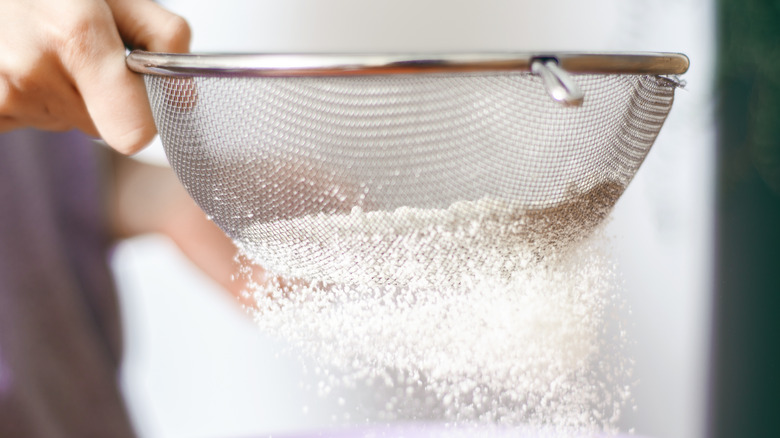The Extra Step To Better Protect Yourself From A Lumpy Cheese Sauce
There are few ingredients that make our mouths water the way cheese does. Just the thought of this dairy product melted into an ooey, gooey, creamy sauce gets the taste buds churning. However, if you've ever made a homemade cheese sauce for your mac and cheese and your favorite nachos recipe, you know there are perils that can easily produce a lumpy and bumpy end product instead of the velvety smooth version you know and love.
The nemesis to achieving that perfect cheesy texture begins with melted butter and flour. These two ingredients are key to forming a roux which will be the base for your cheese sauce, which is why it's important to use a sifter or mesh strainer to sprinkle the flour into the gold buttery liquid.
Sifting flour is an important step in many a recipe, including cookies and cakes, because it makes it lighter, less compact, and ultimately easier to mix into other ingredients. But there is still another precaution to take.
Your cheese selection can make or break your sauce
While incorporating sifting into making your cheese sauce will help mitigate those lumps, getting the roux right is not a guarantee for a perfect sauce. The cheese you use can either help or hinder your culinary endeavors. It is recommended you skip the convenience of pre-shredded cheese and grate it yourself. This is because the cheese in those store packages is coated with an anti-caking agent that prevents it from melting the way cheese is meant to melt.
Cooking your cheese sauce at the wrong temperature can also be a stumbling block as you tread toward a blissful, cheesy nirvana. If you find that your sauce is separating and there are pools of oil forming on top of it, you need to turn down your stovetop burner's temperature. Otherwise, you will end up with a gritty and granular texture to your sauce that is, perhaps, more unappetizing than the dreaded lumps.

